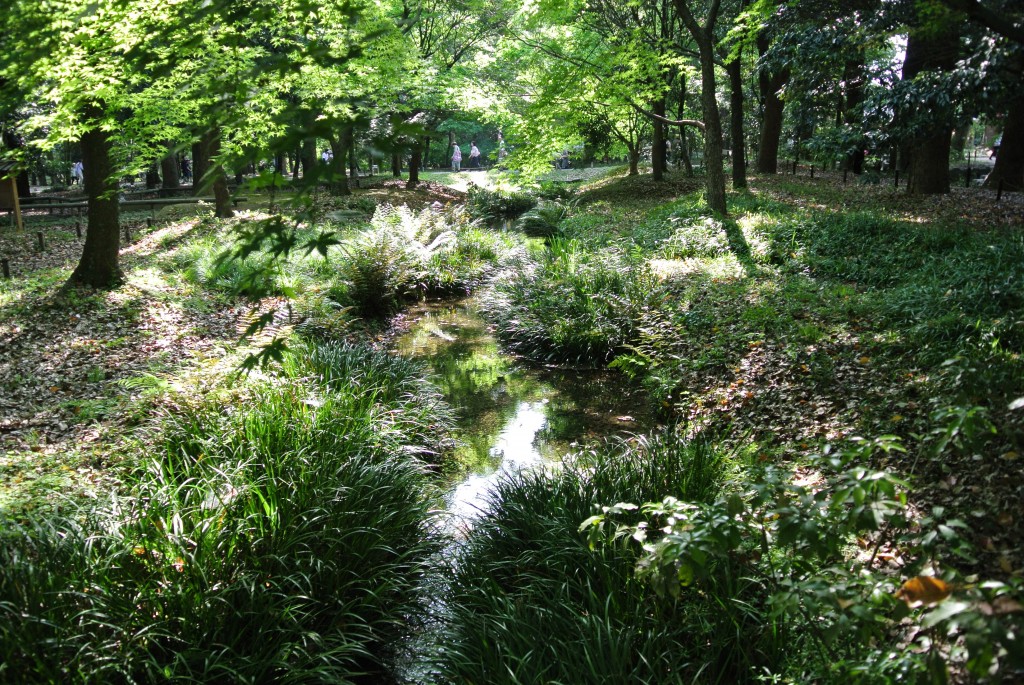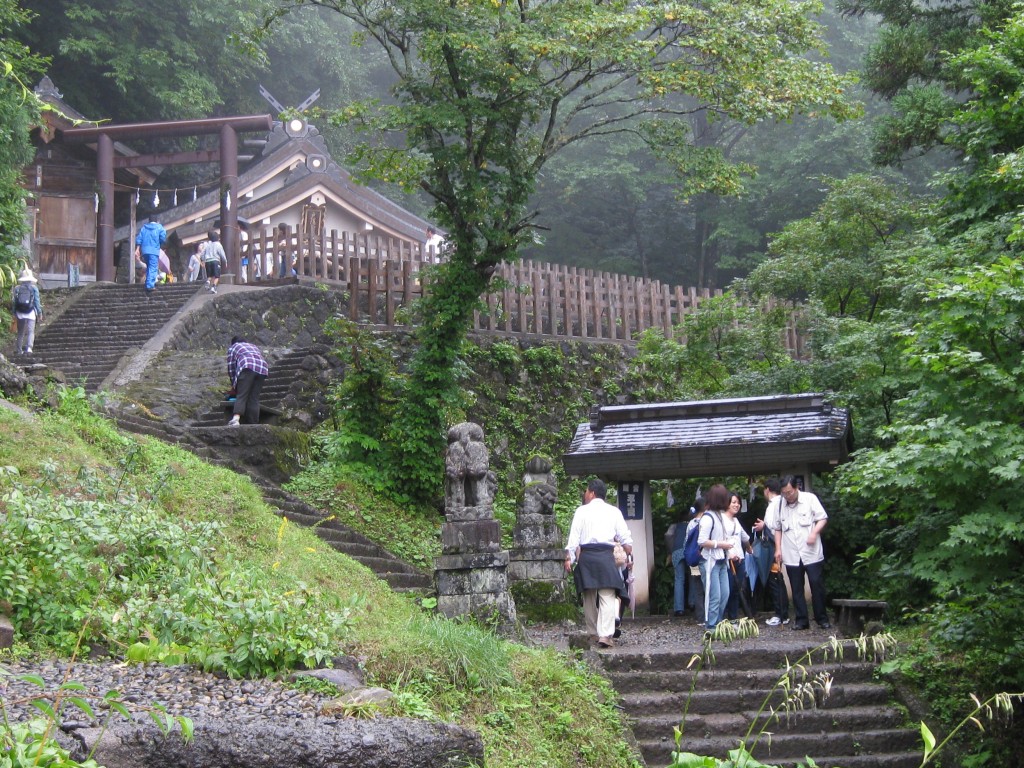
Aike Rots, currently in the final stages of a doctorate at Oslo University
Green Shinto friend, Aike Rots, was passing through Japan recently in relation with his forthcoming doctoral dissertation on ‘The Forests of the Gods: Shinto, Nature and the Rediscovery of Sacred Space’.
Aike has been investigating green initiatives being carried out by various shrine groups up and down the country, and in the process has turned up fascinating developments.
While in Kyoto, he generously agreed to talk about some of them. It’s a unique overview of what is happening at ‘grass-roots’ level.
I) Meiji Shrine in Tokyo
At the prestigious Meiji Shrine, Aike met with members of the NPO Hibiki (a non-profit organisation). The group is composed of volunteers, and though they are officially independent, they have an office at the shrine. The NPO is educational in purpose and maintains three working teams; 1) English language guided tours of the shrine; 2) working on a rice field at the shrine; 3) planting trees and raising seedlings for replantation at Tohoku and elsewhere.
II) Shiroyama Hachiman-gu in Nagoya
At this relatively small shrine, Aike met with representatives of a NPO to protect a forest on a former castle site. The group is working at the moment on the reintroduction of fireflies as a means to foster goodwill towards the woods (rather than seeing them as a source of harmful insects and troublesome leaves etc.)
Aike thought it representative of various other shrine projects concerned with shrine woods or property. Two Kyoto initiatives he mentioned were the Aoi project at Kamigamo, by which local schoolchildren are encouraged to grow the increasingly rare aoi plant, and the Tadasu no mori group at Shimogamo aimed at conservation of the woods there.
III) Goshokomataki Jinja in Ibaraki prefecture
At this small shrine in Ibaraki prefecture (near Mt. Tsukuba), the local priest has been carrying out a project for forest maintenance and environmental education for over 15 years. Aike visited the shrine, which is surrounded by a beautiful little forest. He interviewed the priest, who is now seen as a pioneer in Shinto environmentalism, his initiative being one of the first concrete shrine-based environmental projects.
IV) Tohoku
In travelling across Tohoku and seeing some of the lasting damage along the coastline, Aike met with shrine people struggling with the rebuilding. One shrine family had set up a library, and another priest was heavily involved in spiritual care and helping people deal with bereavement.
You can read all about Aike’s Tohoku trip in greater detail on his blog here.
V) Shasou Gakkai (at Ise)
The Shasou Gakkou is a study group dedicated to study and preservation of the sacred groves around shrines. There is an annual symposium, which this year was held at Ise, attended by some 60-70 people.
The paper that made the biggest impression on Aike was one on ‘Nature Power’ by Prof Hiroi of Chiba University. Among other examples, it mentioned a progressive shrine in Gifu with an NPO that generates electricity from water. Alternative energy, one would have thought, would be dear to the heart of a nature religion, and here is a prime exemplar.
I asked Aike if he knew of any other shrine ventures in alternative energy. There was one in Hokkaido he had heard of that was trying to make do with solar power. Apparently the priest had said that since they worshipped Amaterasu, they should be able to benefit from the power she produces… it’s a very good point!!

The woods at Shimogamo Jinja in Kyoto, managed by a dedicated group working to conserve the shrine's surrounds


Leave a Reply